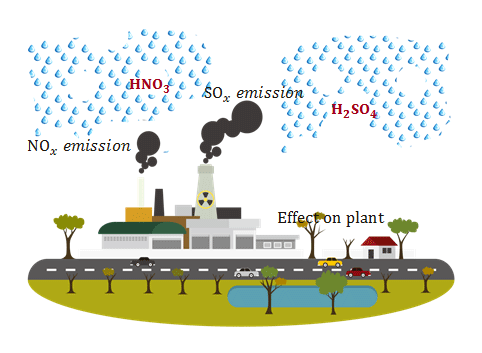
The Devastating Impact of Acid Rain and Ozone Pollution: Causes, Effects, and Solutions
Acid rain and ozone pollution are two critical environmental problems affecting the planet, ecosystems, and human health. Understanding the causes, effects, and solutions of these phenomena is essential to protect our environment and future generations.
In this article, we will explore the acid rain and ozone pollution meaning, how they form, their harmful effects, and practical steps to reduce their impact.
Understanding Acid Rain and Ozone Pollution
Acid rain and ozone pollution are both forms of air pollution, but they differ in their causes and consequences:
Acid rain occurs when sulfur dioxide (SO₂) and nitrogen oxides (NOₓ) combine with water vapor in the atmosphere, forming acidic precipitation. This rain can fall as rain, snow, fog, or even dust.
Ozone pollution, also called ground-level ozone, forms when sunlight reacts with pollutants such as nitrogen oxides (NOₓ) and volatile organic compounds (VOCs). This is different from the protective ozone layer in the stratosphere.
Both acid rain and ozone pollution are harmful to humans, animals, and the environment.
Major Causes of Acid Rain and Ozone Pollution
The primary causes of acid rain and ozone pollution are human activities and industrial emissions:
Industrial Emissions – Factories release large amounts of sulfur dioxide and nitrogen oxides into the atmosphere.
Vehicle Exhaust – Cars, trucks, and buses emit nitrogen oxides that contribute to ozone formation and acid rain.
Burning Fossil Fuels – Coal, oil, and natural gas burning release harmful gases, fueling both acid rain and ozone pollution.
Deforestation – Reduces the natural absorption of pollutants and worsens ozone pollution.
Understanding the causes of acid rain and ozone pollution helps in creating effective preventive strategies.
Negative Effects of Acid Rain and Ozone Pollution
The effects of acid rain and ozone pollution are severe and widespread, affecting ecosystems, infrastructure, and human health:
Environmental Damage – Acid rain lowers the pH of soil and water bodies, harming plants, fish, and wildlife.
Health Risks – Ozone pollution irritates the respiratory system, causing coughing, throat irritation, asthma, and other lung diseases.
Structural Damage – Acid rain corrodes buildings, monuments, and bridges made of limestone or marble.
Crop Damage – Both acid rain and ozone pollution reduce agricultural productivity, affecting food supply.
The negative impacts of acid rain and ozone pollution highlight the urgent need for mitigation measures.
Positive Solutions to Reduce Acid Rain and Ozone Pollution
There are several solutions to tackle acid rain and ozone pollution, combining government action, industry regulation, and individual responsibility:
Adopt Clean Energy Sources – Switching to renewable energy like solar and wind reduces sulfur dioxide and nitrogen oxide emissions.
Vehicle Emission Control – Using electric vehicles and enforcing emission standards reduces ozone formation.
Air Quality Monitoring – Governments and industries can track pollutants to identify sources of acid rain and ozone pollution.
Plant Trees and Green Spaces – Trees absorb pollutants and improve air quality, mitigating both problems.
Public Awareness – Educating people about the effects and solutions encourages eco-friendly practices.
Implementing these positive steps against acid rain and ozone pollution can significantly improve environmental and human health outcomes.
Frequently Asked Questions (FAQs)
Q1: What is acid rain and ozone pollution?
Acid rain results from atmospheric chemicals mixing with rain, while ozone pollution is ground-level ozone formed from pollutants and sunlight.
Q2: How do acid rain and ozone pollution affect health?
Exposure can cause respiratory issues, throat irritation, asthma attacks, and long-term cardiovascular problems.
Q3: Can acid rain and ozone pollution harm agriculture?
Yes, acid rain changes soil chemistry and damages crops. Ozone pollution reduces plant growth and productivity.
Q4: How can we prevent acid rain and ozone pollution at home?
Reduce fossil fuel use, plant trees, support clean energy, and avoid unnecessary vehicle use.
Q5: Are there technologies to monitor acid rain and ozone pollution?
Yes, air quality sensors and monitoring systems help detect and track these pollutants effectively.
Explore PM2.5 and PM10 sensors at Jayesh Traders to take control of the air in your home or office.

